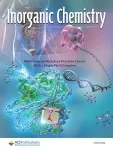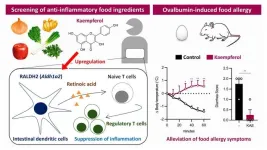(Press-News.org) Human civilization is currently evolving at an unprecedented rate, with new breakthroughs every single day. This has become possible due to never-tapped-before levels of energy resources. However, the unsustainable development has recently raised concerns about adverse effects on the environment, resulting in a growing urgency to address issues pertaining to energy efficiency and climate change, especially in urban environments. Notably, rapid urbanization has worsened the urban heat island effect, a phenomenon where a city experiences significantly warmer temperatures than the surrounding rural areas, increasing the energy demand for heating and cooling systems. As a result, conventional air source heat pumps often suffer from reduced efficiency in high-temperature urban environments, prompting higher electricity consumption and operating costs. This pressing issue underscores the need for innovative, sustainable energy solutions.
The integration of ground source heat pump (GSHP) systems with energy piles has emerged as a promising answer to this challenge. Energy piles uniquely combine the structural support of foundation systems with geothermal heat exchange capabilities, providing a dual-purpose solution that aligns with smart city development goals. In addition, advances in geotechnical and energy technologies have made it possible to implement these systems in diverse urban conditions.
In a recent study, a team of researchers, led by Professor Shinya Inazumi from the College of Engineering at the Shibaura Institute of Technology and Associate Professor Apiniti Jotisankasa from Kasetsart University, has comprehensively reviewed the integration of GSHP systems with energy piles. Their paper was published in Smart Cities on November 25, 2024.
Prof. Inazumi remarks, “In recent years, there has been an increasing global emphasis on reducing carbon emissions and transitioning to renewable energy sources. This study aimed to provide a practical, scalable solution that bridges geotechnical engineering with renewable energy systems, contributing to sustainable urban infrastructure while addressing critical issues of energy management and environmental impact.”
The combination of GHSP systems and energy piles is a transformative approach to reducing electricity consumption and operating costs in cities facing growing energy demands. It takes advantage of stable ground temperatures to provide efficient heating and cooling, thus outperforming traditional air-source systems. Furthermore, it promotes heat dissipation through optimized groundwater circulation, ensuring the longevity and performance of geothermal systems.
In the review, the researchers emphasize the need for tailored design and adaptive management of the proposed dual-structure infrastructure and advocate site-specific strategies to maximize benefits. In residential, commercial, and industrial buildings, these systems can significantly reduce heating and cooling costs while reducing carbon emissions. Smart cities can incorporate energy stacks into infrastructure replanning, aligning with climate action goals and improving resilience to the urban heat island effect. Notably, energy piles can be embedded in roads, bridges, and underground transportation systems to manage thermal loads. This integration could optimize the energy efficiency of transportation facilities and extend their structural life. Furthermore, these systems can complement solar and wind energy by providing stable thermal energy storage, improving the overall efficiency of the current energy system.
“Government-backed subsidies or tax rebates could encourage the widespread adoption of this technology, further reducing barriers such as high initial installation costs and promoting sustainable urban growth,” highlights Prof. Inazumi.
Lastly, the researchers encourage scientists and urban planners to explore the GHSP system and the energy pile-based integrated approach to promote sustainable urban development.
By bridging the gap between geotechnical engineering and renewable energy, this work lays the foundation for sustainable urban living, and by addressing energy challenges currently faced by humanity, it aims to pave the way for resilient, energy-efficient urban development!
***
Reference
DOI: https://doi.org/10.3390/smartcities7060138
About Shibaura Institute of Technology (SIT), Japan
Shibaura Institute of Technology (SIT) is a private university with campuses in Tokyo and Saitama. Since the establishment of its predecessor, the Tokyo Higher School of Industry and Commerce, in 1927, it has maintained “learning through practice” as its philosophy in the education of engineers. SIT was the only private science and engineering university selected for the Top Global University Project sponsored by the Ministry of Education, Culture, Sports, Science and Technology and had received support from the ministry for 10 years, starting from the 2014 academic year. Its motto, “Nurturing engineers who learn from society and contribute to society,” reflects its mission of fostering scientists and engineers who can contribute to the sustainable growth of the world by exposing their over 9,500 students to culturally diverse environments, where they learn to cope, collaborate, and relate with fellow students from around the world.
Website: https://www.shibaura-it.ac.jp/en/
About Professor Shinya Inazumi from SIT, Japan
Dr. Shinya Inazumi is currently a Professor at the College of Engineering at Shibaura Institute of Technology. He received his M.S. and Ph.D. degrees from Kyoto University in 2000 and 2003, respectively. He is renowned for his contributions to the field of geotechnical engineering. He received the Best Paper Award of the 13th International Conference on Geotechnique, Construction Materials and Environment in 2023, the Reiwa 2nd Year Japan Society for Materials Science Award from The Society of Materials Science of Japan in 2021, and also the ISSN Outstanding Researcher Award and ISSN Golden Research Award in 2020, among others. He has published over 350 articles that have received over 1,000 citations. His broader research interests include civil engineering, geoinformatics, artificial intelligence and data science.
Funding Information
This research received no external funding.
END
A joint research team from the University of Canberra and Kuwait College of Science and Technology has achieved groundbreaking detection of Parkinson's disease with near-perfect accuracy, simply by analyzing brain responses to emotional situations like watching video clips or images. The findings offer an objective way to diagnose the debilitating movement disorder, instead of relying on clinical expertise and patient self-assessments, potentially enhancing treatment options and overall well-being for those affected by Parkinson's disease. The study was published Oct. 17 in Intelligent ...
Prostate cancer remains a global health challenge, ranking as the second most commonly diagnosed cancer among men. Although treatments like androgen deprivation therapy have been effective for early-stage prostate cancer, advanced stages, such as castration-resistant prostate cancer, present significant treatment challenges due to resistance to therapies. Current approaches targeting androgen receptor (AR) signaling, such as taxanes and newer agents, show limited success. Cisplatin, a widely used anticancer drug, has been used in combination therapies but its use is limited by severe ...
Sign language serves as a sophisticated means of communication vital to individuals who are deaf or hard-of-hearing, relying on hand movements, facial expressions, and body language to convey nuanced meaning. American Sign Language exemplifies this linguistic complexity with its distinct grammar and syntax.
Sign language is not universal; rather, there are many different sign languages used around the world, each with its own grammar, syntax and vocabulary, highlighting the diversity and complexity of sign languages globally.
Various ...
UTSA’s Office of Research today announced the launch of the Center for Space Technology and Operations Research (CSTOR), a new research center dedicated to advancing engineering, technology and operations that will support space missions between the Earth and the Moon, an area referred to as cislunar space, as well as the lunar surface. The center will address the growing demand for research and workforce development by civil, commercial and national security space agencies and companies. David Silva, UTSA distinguished professor of physics and astronomy, will serve as the center’s inaugural director.
CSTOR will provide enhanced support ...
Craniopharyngioma (CP) is a rare brain tumor that develops in the regions close to the hypothalamus and pituitary gland. The CP tumors lead to complications like defective vision, neuronal defects, diabetes, and developmental problems. There are two primary subtypes of CPs: adamantinomatous craniopharyngioma (ACP) and papillary craniopharyngioma (PCP). These two subtypes are distinguished by their distinct genetic profiles. ACP is typically characterized by mutations in the CTNNB1 gene, while PCP is primarily associated with BRAF gene mutations.
The primary course of action for treating CP is surgical intervention. However, the tumor's invasive ...
Among the many artificial intelligence and machine learning models available today for image translation, image-to-image translation models using Generative Adversarial Networks (GANs) can change the style of images. These models work by using two input images: a content image, which is altered to match the style of a reference image. These models are used for tasks like transforming images into different artistic styles, simulating weather changes, improving satellite video resolution, and helping autonomous vehicles recognize different lighting conditions, like day and night.
Now, researchers ...
Allergic diseases such as asthma, atopic dermatitis, and food allergies have been increasing in frequency over the last few years. Food allergies in particular affect millions of people worldwide—this includes allergies to foods such as milk, peanuts, eggs and shellfish. They are typically caused by the immune system being hypersensitive to harmless substances in foods and the environment. Flavonoids are chemicals present in various fruits and vegetables that are known to have anti-allergic effects and show promise as natural allergic treatments.
To better understand how these allergies can be treated, let’s look at an interesting anti-allergic mechanism in our cells. ...
How can we ensure that as many households as possible adopt not only solar panels, but also their own battery to store solar energy, a heat pump, and an electric car? Researchers at the Universities of Basel and Geneva have looked into just this question.
Climate protection and the energy revolution must continue to make progress, and private households could make a significant contribution to this goal if they would use environmentally friendly technologies such as solar panels, electric vehicles, and heat pumps. Dr. Mart van der Kam and Professor Ulf Hahnel at the University of Basel, Switzerland, conducted research into the political measures that would be necessary to fully realize ...
A new scientific study published in the journal Foresight concludes that human civilisation is on the brink of the next ‘giant leap’ in evolution. However, progress could be thwarted by centralised far-right political projects such as the incoming Donald Trump administration.
"Industrial civilisation is facing 'inevitable' decline as it is replaced by what could turn out to be a far more advanced ‘postmaterialist’ civilisation based on distributed superabundant clean energy. The main challenge is that industrial civilisation is facing such rapid decline that this could derail the emergence of a ...
Endocannabinoids in the brain play a key role in food intake and energy use. Modulating the action of these molecules could help fight obesity, say researchers at Université de Montréal’s affiliated hospital research centre (CRCHUM).
For years, Université de Montréal medical professor Stephanie Fulton and her team have been unravelling the mechanisms in the human nervous system that control people’s need to eat and to engage in physical activity, and how their metabolism affects their mood.
Their latest ...









